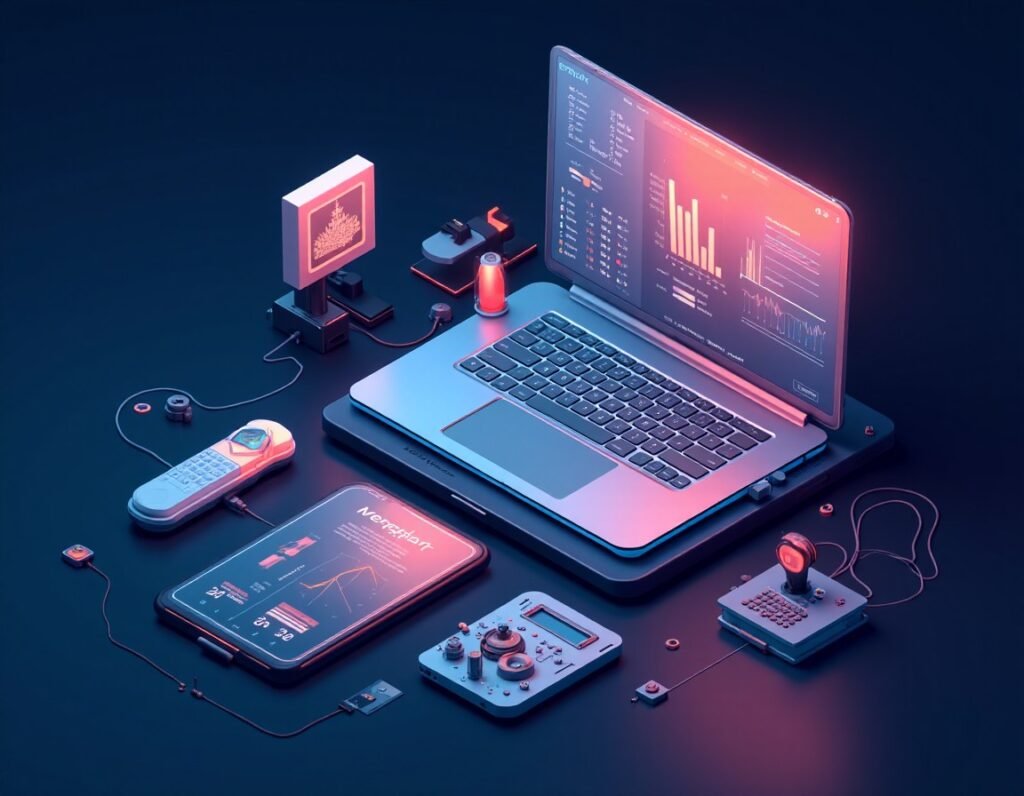“`html
Can AI-Powered EdTech Solutions revolutionize learning by making personalized education a reality for every student? As we navigate the ever-evolving landscape of Innovative Gadgets and Tech Trends, one thing is clear: the future of education is being rewritten with AI-powered tools that cater to individual learning styles. In this article, we’ll delve into the world of AI-Powered EdTech Solutions, exploring how these cutting-edge technologies are transforming the way we learn and making high-quality education more accessible than ever before. From adaptive assessments to intelligent tutoring systems, we’ll examine the various components that make up this revolutionary approach to learning, and discuss the benefits and challenges associated with implementing AI-Powered EdTech Solutions in classrooms worldwide.
What is “AI-Powered EdTech Solutions”?
AI-Powered EdTech Solutions refer to educational technologies that utilize artificial intelligence to enhance learning experiences. These solutions personalize education by adapting to individual student needs, providing tailored content, and offering real-time feedback.
Top 10 Emerging EdTech Trends Revolutionizing Classroom Experience
1. Adaptive Learning Technologies
Adaptive learning technologies use AI algorithms to adjust the difficulty and type of content based on a student’s performance. This ensures that each learner receives a customized educational experience, enhancing engagement and comprehension. Companies like DreamBox and Knewton are leading the way in this space, offering platforms that dynamically adapt to student needs.
2. Intelligent Tutoring Systems
Intelligent Tutoring Systems (ITS) provide personalized instruction and feedback to students without human intervention. These systems use AI to simulate one-on-one tutoring, helping students master complex subjects at their own pace. Carnegie Learning’s MATHia is a prime example of ITS, offering personalized math instruction to students.

3. Virtual and Augmented Reality
Virtual Reality (VR) and Augmented Reality (AR) are transforming classrooms by providing immersive learning experiences. These technologies allow students to explore historical sites, conduct science experiments, and engage with complex concepts in a virtual environment. Companies like zSpace and Nearpod are pioneering VR and AR in education.
4. AI-Driven Data Analytics
AI-driven data analytics tools help educators track student progress and identify areas needing improvement. By analyzing large datasets, these tools provide insights into student performance, enabling teachers to tailor their instruction effectively. Platforms like BrightBytes and Edmodo are examples of how data analytics is being integrated into education.
5. Automated Grading Systems
Automated grading systems use AI to evaluate student work, providing instant feedback and freeing up teachers’ time for more personalized instruction. These systems can grade essays, quizzes, and even complex assignments with high accuracy. Turnitin and Gradescope are leading providers of automated grading solutions.
6. Personalized Learning Paths
Personalized learning paths leverage AI to create customized educational journeys for each student. By assessing individual strengths and weaknesses, these systems recommend specific learning activities and resources. Platforms like Khan Academy and Coursera are utilizing AI to offer personalized learning experiences.
7. AI-Powered Language Learning Apps
Language learning apps powered by AI provide interactive and engaging ways to learn new languages. These apps use speech recognition and natural language processing to offer real-time feedback and personalized lessons. Duolingo and Babbel are popular AI-powered language learning platforms.
8. Collaborative Learning Platforms
Collaborative learning platforms use AI to facilitate group work and peer-to-peer learning. These platforms enable students to collaborate on projects, share resources, and provide feedback to each other. Google Classroom and Microsoft Teams are examples of collaborative platforms enhancing classroom experiences.
9. AI-Enhanced Accessibility Tools
AI-enhanced accessibility tools ensure that education is inclusive for all students, including those with disabilities. These tools provide features like speech-to-text, text-to-speech, and real-time translation, making learning materials accessible to everyone. Tools like Microsoft’s Immersive Reader and Google’s Live Transcribe are leading in this area.
10. Blockchain in Education
Blockchain technology is being explored in education for secure credentialing and record-keeping. By providing a decentralized and tamper-proof system, blockchain ensures the authenticity of academic records and certificates. Companies like Learning Machine and Blockcerts are pioneering blockchain applications in education.
Benefits of AI-Powered EdTech Solutions
The integration of AI-Powered EdTech Solutions in education offers numerous benefits:
- Personalization: Tailors learning experiences to individual student needs.
- Efficiency: Automates administrative tasks, allowing teachers to focus on instruction.
- Engagement: Provides interactive and immersive learning experiences.
- Accessibility: Ensures education is inclusive for all students.
Challenges in Implementing AI-Powered EdTech Solutions
Despite the benefits, there are challenges in implementing AI-Powered EdTech Solutions:
- Cost: High initial investment for technology and infrastructure.
- Privacy: Concerns over data security and student privacy.
- Training: Need for teacher training to effectively use AI tools.
- Equity: Ensuring equal access to technology for all students.
Case Studies: Successful Implementation of AI in Education
Several institutions have successfully integrated AI-Powered EdTech Solutions into their curricula:
- Georgia State University: Implemented AI-driven advising systems to improve student retention rates.
- Arizona State University: Uses AI to personalize learning experiences and improve student outcomes.
- Minerva Schools: Employs AI to create adaptive learning environments for global students.
Comparing AI-Powered EdTech Solutions
| Solution | Features | Benefits |
|---|---|---|
| DreamBox | Adaptive learning, real-time feedback | Personalized math instruction |
| Carnegie Learning | Intelligent tutoring, data analytics | Improved math proficiency |
| Duolingo | Interactive language lessons, speech recognition | Engaging language learning |
Conclusion
The future of education is being reshaped by AI-Powered EdTech Solutions. These technologies offer personalized, efficient, and engaging learning experiences, making education more accessible and inclusive. However, challenges such as cost, privacy, and equity must be addressed to fully realize their potential. As we continue to explore the possibilities of AI in education, it is crucial to balance innovation with ethical considerations.
Additional Resources
- How AI is Transforming Higher Education
- The Top 5 Ways AI is Transforming Education
- AI in Education: What It Means for Teachers and Students
For more insights on AI-Powered EdTech Solutions and other Innovative Gadgets and Tech Trends, visit Top Gadgets Spot and explore our Education Tech section. Follow and subscribe for the latest updates!
“`







